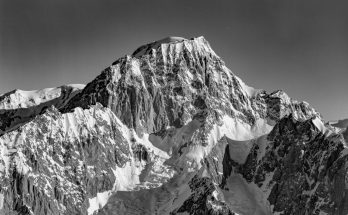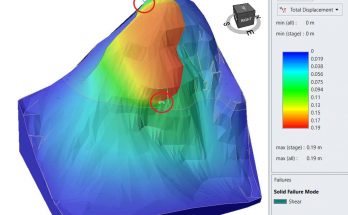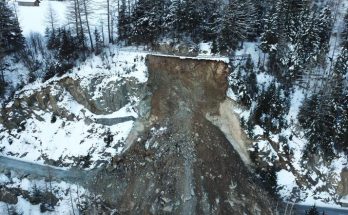Florence Delasoie
Co-supervisors: Prof. Michel Jaboyedoff, Dr. François Baillifard
Rapporteur: Prof. Jean-Luc Epard
The DSGSD (Deep Seated Gravitational slope Deformations) phenomena occur in most mountainous landscapes. Despite this phenomen has been recognized worldwide as a major processes of mass wasting, the mechanisms of most mapped DSGSD are not well understood.
In the Bagnes Valley (Valais, Switzerland), 14 DSGSD have been detected. Geologically, the field is situated in metamorphic rocks : quartzite-schists, prasinite. This study focuses on the Barmasse area, which is the seat of a 1.5 square-km-large DSGSD. The deep-seated movements cause shallower landslides with important displacements that produce deformations on the cantonal road connecting the lower Bagnes valley to the Mauvoisin hydroelectric power plant. Moreover, frequent rockfalls are originating from the scarp of these landslides or from their scree slope. Due to the economical importance of the object at risk, the municipality of Bagnes and the canton of Valais set up a monitoring system to monitor the movements of the shallow landslide, and build protection dams to reduce the rockfall risk.
The aim of this study are 1) to characterize the mechanisms of the DSGSD in order to evaluate its activity and its future evolution and 2) to better understand the link between superficial and deep movements.
A multidisciplinary approach is used, containing field mapping, structural analysis, measurements displacement (Extensometers, DGPS and Terrestrial Laser Scanning), dendrochronology, geophysics, hydrogeology,…
The results show that the mechanisms of the DSGSD as well as the shallow landslides is mainly driven by large scale toppling of subvertical sets. 6 families of discontinuities have been detected in the field and in Coltop 3D : J3 (parallel to the foliation S0), J2/J1, J4/J5 (subvertical) and J6 (horizontal). In the main scarp, J3=S0 couple with J4 or J5 makes a wedge mechanism rupture possible. Toppling is the most important mechanism failure along J2, J3 and S0, when the foliation dip toward the South.
The movements measured on the DSGSD itself are low (mm/year), but the displacements of the shallow landslides are very important : they reach about 3-5 m/year in the scree slope. As indicated by dendrochronological analysis, datation on trees located on the area and wood in the borehole, the activity of these landslides is recent (between 2’000 BP and 200 BP).
Postglacial debustering and gravity are the main triggering factiors for the deep-seated movement. The shallow landslides are controlle by rainfalls and snow melting. Today, the blocs deposit creep along the valley and the fracturing continues.



